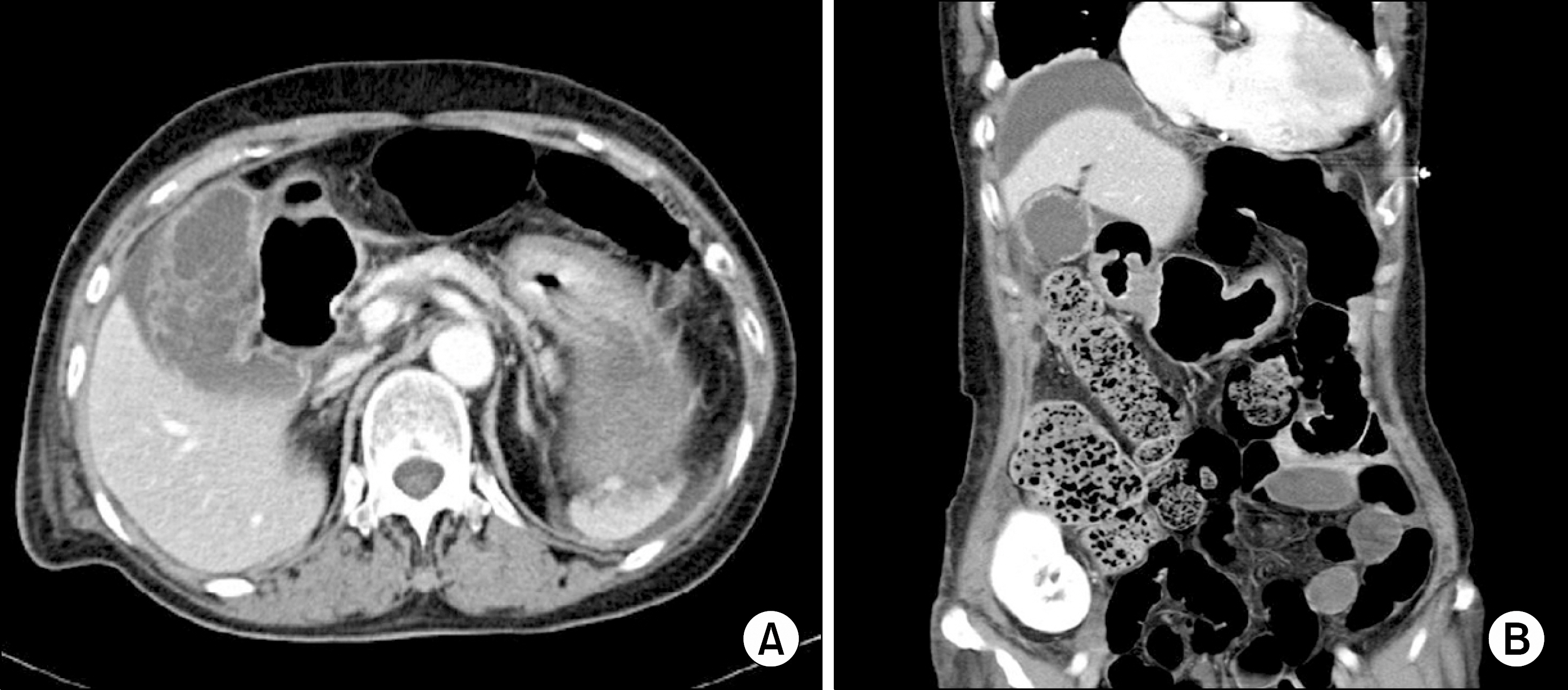J Korean Soc Transplant.
2013 Jun;27(2):57-61.
Acalculous Gallbladder Perforation and Coronary Artery Aneurysm after Kidney Transplantation
- Affiliations
-
- 1Division of Nephrology, Department of Internal Medicine, Dongguk University Ilsan Hospital, Dongguk University College of Medicine, Goyang, Korea. kskimmd@dumc.or.kr
Abstract
- Although gallbladder (GB) perforation due to acalculous cholecystitis after kidney transplantation is rarely observed, it can be life threatening and result in cholecystectomy. Coronary artery aneurysm (CAA) is also rare and may require invasive therapy depending on its diameter. We report herein the case of a 69-year-old female who developed GB perforation due to acalculous cholecystitis after kidney transplantation and underwent cholecystectomy. The patient was later invasively treated when CCA was detected by coronary angiography.
MeSH Terms
Figure
Reference
-
1). Lowell JA, Stratta RJ, Taylor RJ, Bynon JS, Larsen JL, Nelson NL. Cholelithiasis in pancreas and kidney transplant recipients with diabetes. Surgery. 1993; 114:858–63.2). Hopkinson GB, Crowson MC, Barnes AD. Perforation of the acalculous gallbladder following renal transplantation. Transplant Proc. 1985; 17:2014–5.3). Syed M, Lesch M. Coronary artery aneurysm: a review. Prog Cardiovasc Dis. 1997; 40:77–84.
Article4). Banerjee P, Houghton T, Walters M, Kaye GC. Giant right coronary artery aneurysm presenting as a media-stinal mass. Heart. 2004; 90:e50.
Article5). Becker CG, Dubin T, Glenn F. Induction of acute cholecystitis by activation of factor XII. J Exp Med. 1980; 151:81–90.
Article6). Barie PS, Eachempati SR. Acute acalculous cholecystitis. Gastroenterol Clin North Am. 2010; 39:343–57.
Article7). Lorber MI, Van Buren CT, Flechner SM, Williams C, Kahan BD. Hepatobiliary and pancreatic complications of cyclosporine therapy in 466 renal transplant recipients. Transplantation. 1987; 43:35–40.
Article8). Satran A, Bart BA, Henry CR, Murad MB, Talukdar S, Satran D, et al. Increased prevalence of coronary artery aneurysms among cocaine users. Circulation. 2005; 111:2424–9.
Article9). Wan S, LeClerc JL, Vachiery JL, Vincent JL. Cardiac tamponade due to spontaneous rupture of right coronary artery aneurysm. Ann Thorac Surg. 1996; 62:575–6.
Article10). Chia HM, Tan KH, Jackson G. Non-atherosclerotic cor-onary artery aneurysms: two case reports. Heart. 1997; 78:613–6.
Article
- Full Text Links
- Actions
-
Cited
- CITED
-
- Close
- Share
- Similar articles
-
- A Case of Gallbladder Perforation Complicated by Acalculous Cholecystitis due to Non-Typhoidal Salmonella
- Percutaneous Transluminal Coronary Angioplasty for Coronary Artery Stenosis in an Adult Kawasaki Disease with Coronary Aneurysm : A Case Report and Review
- A Case of Coronary Artery Aneurysm
- Kidney Transplantation after ex vivo Repair of an Aneurysm of the Donor Renal Artery
- Right Coronary Artery to Left Ventricular Fistula with a Giant Right Coronary Artery Aneurysm: A case report




